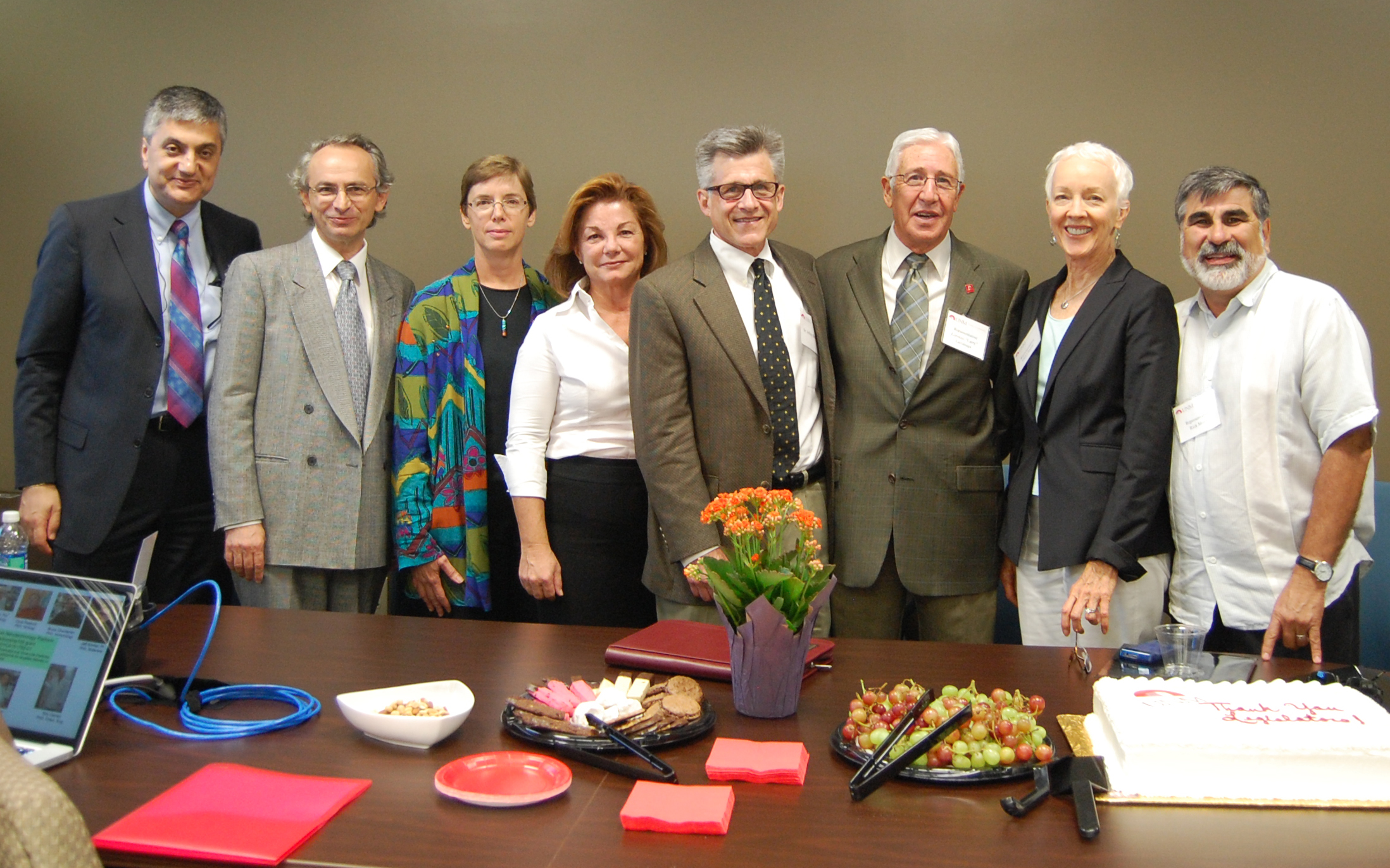
ALBUQUERQUE, N.M. — It wasn’t exactly the grand opening of a research megacenter, but the dedication Aug. 23 of the third floor of the University of New Mexico’s Centennial Engineering Center for a lab combining nanotechnology and nanomedicine offered a start-up charm of its own. Maybe Los Alamos National Laboratory in its early days was something like this.
Clustered in a hallway on a floor of green tiles, with lights, pipes and vents visible overhead, about 50 informally dressed students and sports-jacketed faculty looked on as Sandia fellow and UNM professor Jeff Brinker, UNM School of Engineering dean Catalin Roman, UNM Cancer Center director Cheryl Willman and other administrators explained to three New Mexico state representatives, sitting in an adjacent bubble-like room, why the $2 million the state had contributed to the new facility was a good idea.
Brinker, who spearheaded the drive to create the 5,000-square-foot lab, spoke first: “I used to be content in making materials, but as my wife used to say: ‘Have you saved anyone’s life today? What have you really done?’”
Prominently displayed on the wall was work led by Brinker, published in the most highly respected science journals. Most prominent was a paper detailing the creation by the Brinker group of pore-riddled nanospheres they termed ‘protocells,’ capable of encapsulating and delivering unusually large amounts of cancer-destroying chemicals directly to a cancerous cell.
The protocell work, said Willman, has led to numerous calls from drug companies near Boston and in San Diego, “but we prefer to start a company in New Mexico to bring these achievement to market.”
She pointed out to the legislators that, because of the Cancer Center’s joint work with Brinker and Sandia, UNM is a member with three other institutions — Harvard University, the California Institute of Technology and the Massachusetts Institute of Technology — of the National Cancer Institute’s Nanotechnology Alliance, which has brought millions of federal dollars into New Mexico. The nanobio-nanomedicine lab should help produce more medical breakthroughs from New Mexico, she said.
The lab contains areas to continue work on cancers and low-level pathogens, and to create and analyze new nanomaterials. “For commercial purposes, we have to demonstrate good manufacturing practices that show dosage control, purity, reproducibility and other factors in our protocells,” said UNM post-doctoral student Carlee Ashley, who led development of the nanoscale medicine transporters as part of her doctoral project under Brinker’s tutelage. “And we have to demonstrate removal of toxins that can contaminate our work, before applying to the [Food and Drug Administration] for human trials.”